Review of the Cardinal tomato variety and reviews about it
When choosing tomato seeds for growing on a personal plot, it is recommended to pay attention to the Cardinal tomato variety, reviews of which are almost always positive. Excellent taste is combined with the universal use of the fruit. The intricacies of agricultural technology are described below.
Description of the variety
Tomato Cardinal belongs to the semi-determinant type with a growing season of 110-120 days. The plant develops quickly. The culture is unpretentious to the conditions, but there are still nuances of cultivation.
Distinctive features
An adult bush reaches a height of 1.5-1.7 m. An intensive set of growth requires timely tying and pinching. The maximum yield can be obtained when a plant is formed with 1 or 2 stems. Tomato foliage is characterized by a light green color, medium size and poorly expressed corrugation. The inflorescence has no special signs. The first flowers appear above 8-9 leaves. Further, the bud of inflorescences is observed after 1-2 leaves.
You can grow the Cardinal under cover or in open beds, which becomes possible thanks to the self-pollination of the plant.
Fruit characteristics, yield
The ripening time of the fruits is mid-early. Taste and commercial characteristics of fruits at height:
- pronounced tomato flavor;
- pleasant aroma;
- bright color with shades of red and pink.
About 5-7 tomatoes are formed on the brush. A feature of the variety is the ability to bear fruit several times during one season. The largest fruits are harvested after the first stage of fruiting. The weight of one specimen exceeds 800-850 g. The following tomatoes do not differ in large-fruited, but the weight and appearance correspond to the commercial requirements: a beautiful rounded shape with a slight ovality, the average weight is 400-450 g.
One bush gives a generous harvest per season - up to 4.5 kg. About 16 kg are removed from a square meter.
Subject to the rules of agricultural technology and favorable weather conditions, you can get the first fruits in the first decade of June. There is no need to worry about transporting the crop, tomatoes tolerate it well, without losing marketability and taste.
How to grow seedlings
Preparation for growing seedlings can be done in late April - early March. Dates are chosen depending on the characteristics of the local climate.
Sowing is done in shallow containers or containers (no more than 10-15 cm). The use of peat tablets is allowed. The container is first filled with drainage, the role of which is coped with: expanded clay, perlite or foam fragments. Next, the container is filled with soil mixture. It can be ready-made soil or fertile soil mixed with humus, peat and sand.
Reference! When using soil from the site, it must be calcined in the oven for disinfection. It is also advisable to disinfect the finished soil with a weak solution of potassium permanganate.
The seed also needs preparation. It is soaked in a solution of potassium permanganate for the purpose of disinfection. Before processing, the grains are sorted and checked for germination. These procedures can be omitted when buying seeds from a bona fide manufacturer, who carries out all the preparatory measures himself.
Sowing is carried out after irrigation of the soil and daily sludge. Trenches 1.5 cm deep are made in the soil with a pencil.The distance between the grooves is no more than 3-4 cm.Further, the seeds are laid out in a depression at a distance of 3-5 cm from each other. Sprinkle a trench with a pencil and lightly spray the sowing with water from a spray bottle. To create a greenhouse effect that accelerates the germination of seeds, the surface of the container is covered with a transparent film. All that is needed for good germination is a stable temperature regime (24-27 degrees), lighting (at least 10-11 hours).
Seedling care
The first shoots appear 4-7 days after planting. The Cardinal variety is characterized by friendly shoots. All seeds germinate almost simultaneously. After emergence, the containers are transferred to a well-lit, but cooler room. Favorable temperatures are considered to be between 18 and 20 degrees. The shelter is removed from the containers.
To organize a full daylight hours, it is recommended to use a backlight. The ideal solution is to install a phyto lamp.
Water the planting periodically with a spray bottle. This should be done as the soil is drained. Abundant irrigation provokes decay of the shoots.
As soon as 2-3 true leaves are formed on the seedlings, you can plan a pick. Each plant is transplanted together with an earthen clod into a separate cup or pot. The composition of the soil is used the same as when sowing seeds.
Reference! When transplanting shoots into separate peat pots, subsequent planting in the garden is carried out with minimal stress to the plant. The root system remains intact due to the transfer of seedlings to the ground along with the container.
After picking, the biostimulating composition Kornevin is introduced into the soil. The rules for its use are described in detail in the instructions on the product label. A couple of weeks before transplanting tomatoes into the beds, the seedlings are hardened. Every day, the containers are taken out into the street or in the greenhouse for a couple of hours. An important condition is the absence of drafts and direct sunlight.
How to grow tomatoes
The transfer of seedlings to open ground is carried out after the threat of late spring frosts has passed. 2-3 weeks before planting, you need to enrich the soil with humus and peat. Further, it is generously moisturized and allowed to settle.
Landing
The beds are divided according to the scheme: 2-3 plants are planted per 1 m2. With a dense arrangement of bushes, thickening is created, which leads to damage by fungi and pests. Immediately after planting, the soil is loosened, irrigated and covered with a layer of mulch (at least 4-5 cm).
Care
Care rules are the standard used for large-fruited varieties.
Table 1. Care of the Cardinal variety.
|
Stage |
Description |
|
Watering |
The Cardinal variety needs moderate watering. Excess moisture leads to root rot. Irrigation is carried out under a bush with warm water. Activities are planned for the morning or evening. |
|
Weeding and loosening |
Usually, these activities are carried out simultaneously for a rational use of time. The beds must be cleared of weeds, otherwise this place will become a haven for parasites and harmful microorganisms that pose a serious threat to planting. Loosening ensures normal air circulation, which opens up oxygen to the root system. |
|
bush molding
|
Before the appearance of the first inflorescences, the plant most often does not release stepchildren. Stepsons appear over the first flower brush. The bush is formed into 1-2 stems. In greenhouse conditions, the two-stem method is more often used. It helps to increase yields. Any option is suitable for open ground. The lateral branches on the main stems are called stepchildren. They need to be removed periodically. |
|
Garter |
When the seedlings reach a height of 30-35 cm, the first garter is made. It is convenient to do this with a string and a peg (metal rods, wooden slats). It is better to immediately put the support up to 1.7-1.8 m high.It is easier to tie up the next levels that form as the bush grows. |
|
Fertilizer
|
Minimum injection amount top dressing - 3 times per season:
Nitrogen compounds are used only at the stage of forming the greenery of the bush. After flowering, these substances are not used for feeding. |
Features of cultivation and possible difficulties
When growing a Cardinal, various difficulties may arise, which to a greater extent arise due to errors in agricultural technology or against the background of unfavorable climatic conditions. Common risk factors are:
- abundant watering, causing plant decay;
- sunburn - you can prevent the problem by creating artificial shading;
- low yield - it is more often observed in case of violation of the formation of the bush and improper pinching;
- bursting of the peel of the fruit - the reason lies in the abundance of moisture.
Diseases and pests
Tomato Cardinal is characterized by strong immunity, which reduces the risk of developing common diseases. But this fact does not exclude the implementation of planned preventive measures:
- timely removal of weeds from the beds;
- planting seedlings with respect to the spacing between the bushes;
- dusting with wood ash, which repels pests;
- spraying the beds with insecticides when aphids, spider mites, and mold are detected.
Reference! It is forbidden to use chemicals for processing plants 2 weeks before harvesting.
The nuances of growing in open ground and in a greenhouse
One of the advantages of the Cardinal variety is the ability to grow tomatoes under cover and in the beds. Bushes planted in open ground develop less intensively, reaching a height of 1.2-1.4 m. In a greenhouse, the plant stretches up to 2 meters, giving generous yields.
It is not recommended to plant seedlings of the Cardinal variety in open ground in regions with a cool climate. This is a large part of central Russia.
Nuances of agricultural technology in open beds:
- seedlings must be grown in heated rooms, the method of sowing directly into the soil is not suitable;
- after transferring seedlings to the beds, a shelter should be made to prevent freezing of young shoots during late spring frosts;
- fruiting begins no earlier than mid-June;
- the soil must be protected from drying out with mulching.
When growing the Cardinal variety in a greenhouse, it is worth considering the following features:
- the tomato does not like waterlogging, so a controlled irrigation system is created;
- you can harvest the fruits already at the beginning of June;
- the greenhouse should have opening flaps and doors to provide ventilation, and drafts should be avoided.
Harvesting and application of the crop
The fruits of the Cardinal tomato begin to be harvested in June. The fruiting process extends over the entire growing season of the plant. The first stage is considered the most prolific.
Tomatoes are widely used in cooking:
- pickling, canning;
- salads and juice in the form of preparations for the winter;
- sauces, ketchup;
- tomato paste, etc.
The fruits are stored for a long time. Excellent taste is used by chefs for preparing first and second courses, drinks and sauces. The fullness of tomato aroma and flavor is revealed in fresh tomatoes, which are added as a main ingredient to various salads.
Advantages and disadvantages of the variety
The Cardinal tomato variety is very popular with farmers and summer residents, which is explained by the following advantages:
- large-fruited;
- high commercial qualities;
- universal application;
- the ability to grow under cover and in the open field;
- high tasting score;
- strong immunity, the plant is rarely affected by common pests and diseases;
- good seed germination;
- resistance to adverse weather conditions.
Disadvantages, although not significant, but the Cardinal has:
- To obtain a high yield, you will have to tinker with the formation of a bush, a garter of rapidly developing shoots. If this is not done in a timely manner, under the pressure of wind or heavy rain, the bush will simply break or lie on the ground.
- The second nuance is that the garter must be done in several stages as the tomato grows.
- The third disadvantage of the variety is the inability to use the fruit for pickling in jars due to its large size. But this issue is solved by twisting the tomatoes previously cut into pieces.
Farmers reviews
- Stepan Ilyich, Rostov region
I have been growing the Cardinal variety for more than one year. I plant part of the seedlings in the greenhouse, the rest in the open ground. The yield is higher in those plants that develop under cover. But this method requires a lot of attention: creating a favorable microclimate, frequent garters, pinching. The yield per m2 is 12-17 kg. Less demanding outdoor tomatoes. Bushes do not develop as rapidly, which reduces the regularity of the garters. The risk of fungal infection is reduced to almost zero.
- Antonina Makarova, Voronezh
I tried Cardinal tomatoes for the first time. Previously, I did not dare to grow them because of their large size. It is unrealistic to close such tomatoes in jars. But after the experience I got, I realized that I was wrong. The fruits are very tasty, suitable for rolling salads and tomato juice. It is simply impossible to get enough of them fresh. The pulp is tender, moderately dense, without a green core.
- Plato, Tver region
I grow vegetables for sale. Tomato Cardinal is in good demand among buyers. He sells himself: dense, but not thick-baked tomatoes emit a pleasant aroma, the taste harmoniously combines acidity and sugar content. Fruits perfectly tolerate transportation, retain their presentation for a long time.
Video review of the variety:



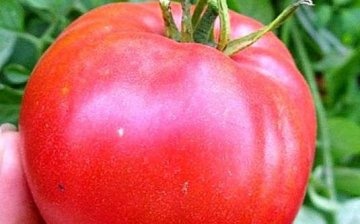


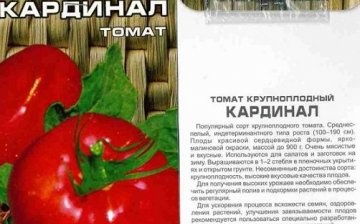




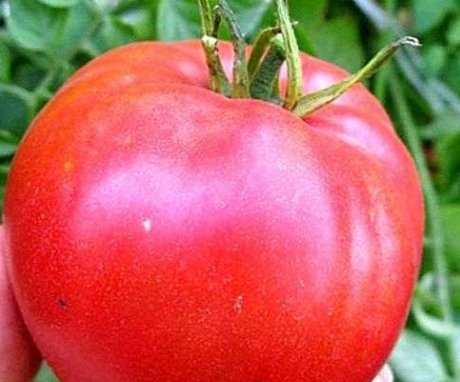
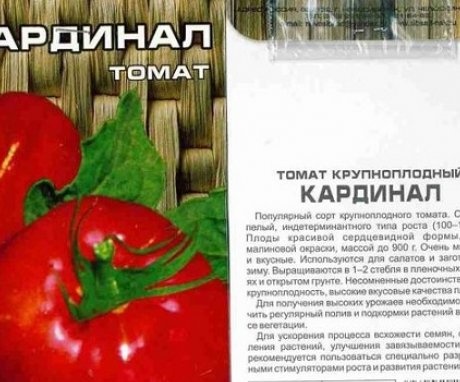
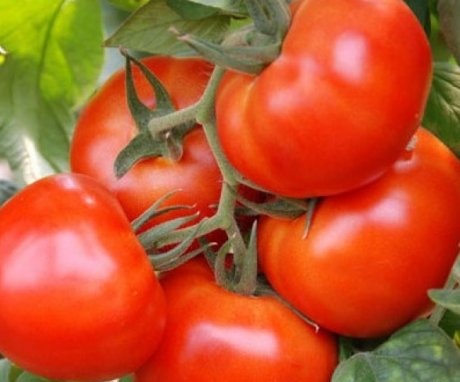

I have not planted such a tall tomato yet, but I really liked the description of the variety. This year, I will try to find seeds, I will grow in the open field in two stalks, so that there are more tomatoes. With such a large fruit size, the main thing is not to overdo it with watering, otherwise the tomatoes will burst.